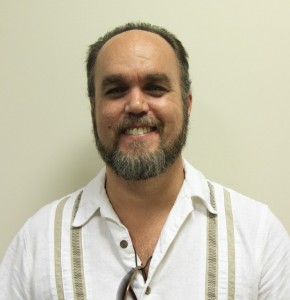 Until I was in the sixth grade my family lived on an Air Force base in South Georgia. The base was a great place for kids. From the time I was six or seven I could ride my bike to wherever I wanted to go. Trips to the movies or the library were a lot of fun, and my parents didn’t have to worry about whether or not I was safe. In the summer my favorite bike ride was to the swimming pool. My friends and I would spend the whole day there, jumping off the high dive, eating ice cream, and just horsing around. It was the perfect way to spend those hot South Georgia summer days.
Until I was in the sixth grade my family lived on an Air Force base in South Georgia. The base was a great place for kids. From the time I was six or seven I could ride my bike to wherever I wanted to go. Trips to the movies or the library were a lot of fun, and my parents didn’t have to worry about whether or not I was safe. In the summer my favorite bike ride was to the swimming pool. My friends and I would spend the whole day there, jumping off the high dive, eating ice cream, and just horsing around. It was the perfect way to spend those hot South Georgia summer days.
Last week, I was in Maryland and Washington D.C., where I met a lot of people involved in restorative justice and other human rights issues. In many parts of Maryland there are problems with poverty, gangs, juvenile delinquency, abuse, drugs and the whole gamut of social ills that plague many urban areas. Several of the people I met on my trip are involved in gang intervention, creating peaceful schools and obtaining services for young people in need of health care, counseling and other services.
One friend was telling me how miserable the summers in that part of the country are. They have a lot of days in the 90s, and often even crossing the 100 mark on the thermometer. The humidity is oppressive. I told my friend how much it sounded like the place where I grew up, and I was reminded of this when I read a recent story at Examiner.com, a Baltimore area news site, titled, “Schools and pools shuttered while city officials advocate for cells and bells.”
This is a pretty catchy title, and it nicely encapsulates what is happening there. The mayor, Stephanie Rawlings-Blake, ran on a platform that included new schools and increased funding for education and youth services. Recently though, she has called for the closing of Baltimore’s seven public swimming pools, while at the same time continuing high levels of funding for city police and supporting the construction of a new youth jail, even though crime has steadily decreased and homicide rates have dropped to their lowest levels in 30 years.
This kind of thinking points out a fundamental flaw in the way that most people think about justice issues, including policy makers. Monday I spoke about restorative justice to Georgetown students enrolled in a class that focuses on Social Justice and Conflict Studies. These young people are very sharp, and they asked some tough questions. We spent a lot of time talking about how restorative justice systems can be implemented in the present society. It is not possible to separate justice policy from social policy, and to try is folly.
I am not saying that the closing of these pools will lead kids directly to crime and prison, but there is a link between how society chooses to allocate its resources and what happens to its citizens. If we put money into prisons instead of schools what can we expect? If Baltimore buys more police cameras on the backs of school kids, what will be the outcome? How these kids are treated now is important. Resources are limited, so it is important to consider where to invest them. This is a big question on a national level, but it goes all the way down to city politics and even to individual citizens. If we build prisons or fund other, more traditional, law enforcement options, we can expect an increase in incarceration. I would rather we worked on ways to spend our money that would help kids get a decent education in a decent school and that we gave them viable alternatives to running the streets. Maybe that is an arts program, maybe it is a baseball team, maybe it’s a mentor and just maybe it’s a swimming pool on a hot Baltimore day.

I think your content is very helpful for kids. They can lean more things about swimming from here.